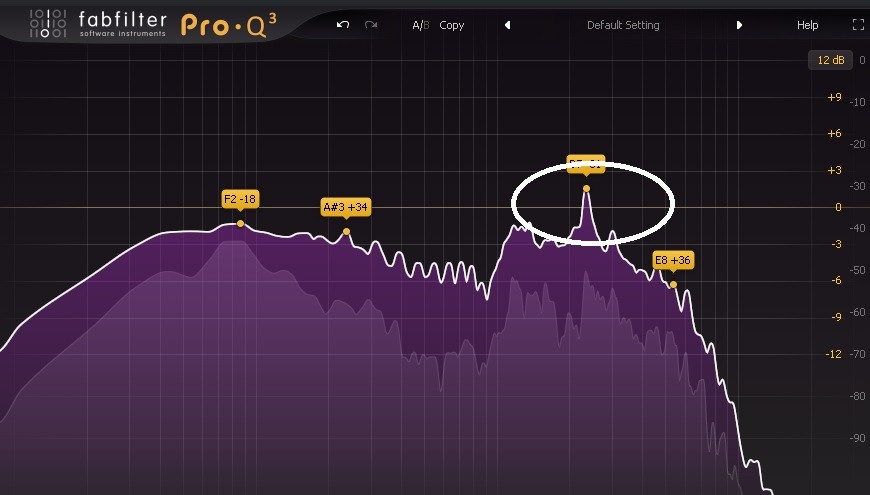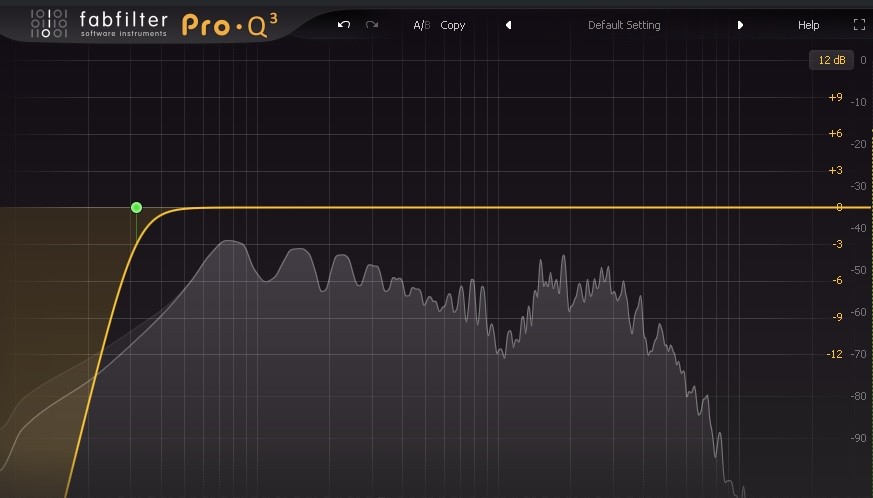Get amazing-sounding quality mixes.
Not sure where to begin when it comes to equalizing a piano?
This guide outlines the best practices you can implement today to identify problematic frequencies and enhance your piano without guesswork.
How to EQ Piano
The piano is a beautiful instrument that can produce a wide range of sounds and emotions.
However, like the sound of any instrument, the sound of a piano can benefit from some equalization, or "EQ," adjustments to achieve the best possible sound.
In this blog post, we'll go over some tips and techniques for EQing a piano to achieve a more balanced, full-bodied sound.
Let’s get started.
Best EQ Settings for a Piano
When it comes to the "best" EQ settings for a piano, it really depends on the recording and the sound you're trying to achieve.
However, here are some general EQ settings that you can use as a starting point:
Getting Rid of Resonance

Resonant frequencies on a piano can cause certain notes to ring out longer or louder than others, which can make the overall sound feel uneven or unbalanced.
Start by identifying the frequency that's causing the resonance.
You can do this by using a narrow-band EQ to sweep through the frequencies while playing the piano, listening for any notes that ring out longer or louder than others.
Once you've identified the resonant frequency, you can use a notch filter to cut that frequency.
A notch filter is a narrow-band EQ that reduces the level of a specific frequency without affecting the surrounding frequencies.
Set the notch filter to the frequency you've identified, and adjust the Q-factor to match the width of the resonant peak.
A dynamic EQ can be a useful tool for reducing resonance on a piano.
By using a dynamic EQ to target the resonant peak, you can reduce its level only when it becomes too loud, which can help preserve the natural sound of the piano.
Remember, removing resonant frequencies from a piano is a subtle process that requires careful listening and experimentation.
Use your ears and take your time to find the best solution for your specific situation.
If you find yourself making more than three notches, then you might want to re-record, or else you risk making the piano sound unnatural.
Remove Rumble & Boom

Rumble and boominess are low-end frequencies that can make the sound of a piano feel too thick or unclear.
Here are some techniques you can use to get rid of rumble and boominess on a piano:
Cut the low frequencies with a high-pass filter - Cut the frequencies below 50-100 Hz, to remove any rumble or noise from the piano recording.
This should make the sound of the piano feel cleaner and more focused.
Use a dynamic EQ to control dynamic low end - A dynamic EQ allows you to reduce any boominess without affecting the rest of the frequency spectrum.
This can be especially helpful if you're dealing with a recording that has dynamic low-end information that's difficult to control with a static EQ.
You can locate these frequencies around 80 Hz to 200Hz.
It's important to consider the context of the music and make sure that any adjustments you make are helping to serve the overall sound of the mix.
How to Reduce Muddiness on a Piano
Muddiness on a piano is frequently caused by an excess of midrange frequencies, which can make the sound cluttered or unclear.
Start by finding the frequencies that are causing the piano to sound muddy.
You can locate these frequencies between 200 Hz and 400 Hz. Use a broad Q-factor so that you can affect all the notes that are causing the problem.
Be careful with this, because this is usually where you find the fullness and warmth of a piano.
So cutting too much can make the piano sound thin in the mix.
It's best to make this cut while listening to the entire mix, not in solo.
Fixing Harshness
Although this is a rare situation, you could find yourself working on a harsh piano sound. This usually happens if you’re mixing a piano solo.
In that case, you can find these problematic frequencies around 2 kHz to 5 kHz.
When cutting harsh frequencies, it's generally a good idea to use a small wide Q-factor to make broad cuts.
This will help you reduce the harshness without making the piano sound too dull or hollow.
If you're having trouble finding the exact frequencies that are causing the harshness, you can use a dynamic EQ to target them.
A dynamic EQ will usually reduce the harshness without affecting the rest of the frequency spectrum.
Make sure to listen to the piano in context with the rest of the mix and adjust the EQ settings as needed.
Fullness and Warmth
Adding fullness to a piano can help give it more body and depth in the mix.
One of the easiest ways to add fullness to a piano is by boosting the lower midrange frequencies.
By boosting frequencies in the 80–120 Hz range, you can add warmth and depth to the sound of the piano, which can make it sound fuller and more resonant.
Depending on how the piano was recorded, you can also find fullness around 180–300 Hz.
Remember to use a broad Q-factor to bring up all the necessary notes since a piano is usually dynamic (the notes keep changing).
Another way to boost thickness is by using a low-shelf filter. Boosting the low frequencies around 120 Hz with a shelf filter can add more fullness to the sound.
You also need to apply a high-pass filter around 80 Hz before doing that to make sure that you don’t bring up the rumble or boominess.
Increasing Clarity and Definition
Increasing the definition of a piano can help it stand out in a mix and make it sound clearer and more articulate.
This boost is really useful if the piano is not audible during the loudest parts of the song.
By boosting frequencies in the 1–5 kHz range, you can add clarity, which can help the piano cut through the mix.
When adding definition and clarity to a piano with EQ, it's important to use a gentle touch. Too much EQ can make the piano sound harsh or unnatural.
Make small adjustments to find the sweet spot where the piano sounds clear but not harsh or piercing.
Adding Presence & Air
Adding sparkle and clarity to a piano can make it sound more bright and lively in the mix.
Boosting frequencies in the 5–12 kHz range can add brightness and air to the sound of the piano, which can make it sound more lively and clear.
This is useful if the piano is sounding too dull and boring. Increasing these frequencies will add some excitement.
Remember, adding presence and air to a piano with EQ requires careful listening because too much can bring up high-end hiss and noise.
How to EQ Piano for Worship
By using EQ correctly, you can achieve a beautiful, full-bodied piano sound that complements and supports the other instruments and vocals in your worship music mix.
However, there are a few specific considerations to keep in mind.
Here are some tips and techniques for achieving a great piano sound for worship songs:
Cut the Low Frequencies - The bass and drums often carry the low end, so you don't want the piano to compete with those instruments.
Use a high-pass filter to cut the frequencies below 80-100 Hz. This will help clean up the sound and make room for the other instruments in the mix.
Boost the Mid-Range Frequencies - Since the piano often plays a supportive role, you need to provide a rich and full-bodied foundation for the other instruments and vocals.
To achieve this sound, boost the mid-range frequencies using a parametric EQ. Start with a boost around 1-5 kHz and adjust to taste.
This will add warmth and presence to the sound of the piano and help it cut through the mix.
Add Some Sparkle with High Frequencies - In worship music, the vocals often take center stage, so you want the piano to provide a supportive and complementary sound.
Boosting the high frequencies can add some sparkle and brilliance, making it stand out in the mix without overpowering the vocals.
Use a high-shelf EQ to boost the frequencies around 5-10 kHz to add sparkle.
Adjust the Balance - Finally, adjust the balance of the different frequency ranges to achieve a balanced and full-bodied sound.
Use your ears and experiment with different EQ settings until you find a balance that works well in the context of your worship music.
Use these settings as a starting point.
Trust your instincts when it comes to EQing the piano, and don't be afraid to try new things until you find the perfect sound.
Piano EQ Cheat Sheet
Here's a handy cheat sheet that you can use as a quick reference when EQing a piano.
Let’s start with one for surgical EQ.
- Rumble: 20 Hz - 80 Hz
- Boominess: 80 Hz - 180 Hz
- Muddiness: 180 Hz - 300 Hz
- Boxiness (hollowness): 400 Hz - 1 kHz
- Harshness: 2kHz - 5kHz
- Hiss & Noise: +12 kHz
Remember, you don’t always have to cut those frequencies; only cut when it’s necessary.
Here’s one for tonal EQ. You can use this cheat sheet when boosting frequencies to enhance your piano.
- Warmth & Fullness: 80 Hz - 300 Hz
- Depth: 400 Hz - 1 kHz
- Definition & Clarity: 1 kHz - 2.5 kHz
- Presence: 2 kHz - 5 kHz
- Hammer Attack: 7 kHz - 8 kHz
- Air & Brilliance: 8 kHz - 12 kHz
Remember, this cheat sheet is just a starting point, and you should use your ears and experiment with different EQ settings to find the perfect sound for your piano recording.